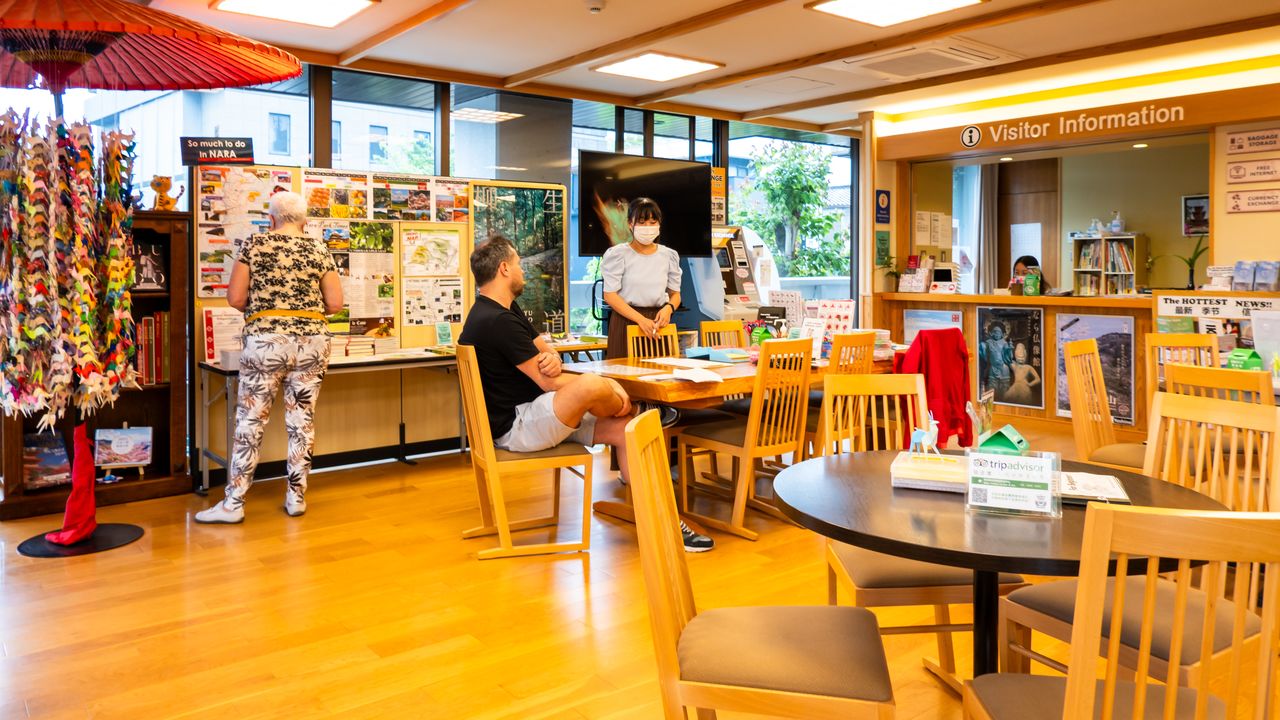
Sarusawa Inn: Helping Overseas Visitors Explore Nara
Guideto Japan
Travel Culture Global Exchange- English
- 日本語
- 简体字
- 繁體字
- Français
- Español
- العربية
- Русский
An Oasis for Overseas Visitors in Central Nara
Nara Prefecture is renowned for its ancient culture and natural beauty, as exemplified by the great buddha of Tōdaiji, the deer at Nara Park, and the Mount Kasuga Primeval Forest. For many decades now, Nara has also been a standard destination for school trips. As well as boasting three world heritage sites, Nara is ranked fifth in Japan for overseas visitor numbers, after Tokyo, Chiba, Osaka, and Kyoto (which all have international airports and/or Shinkansen stations).
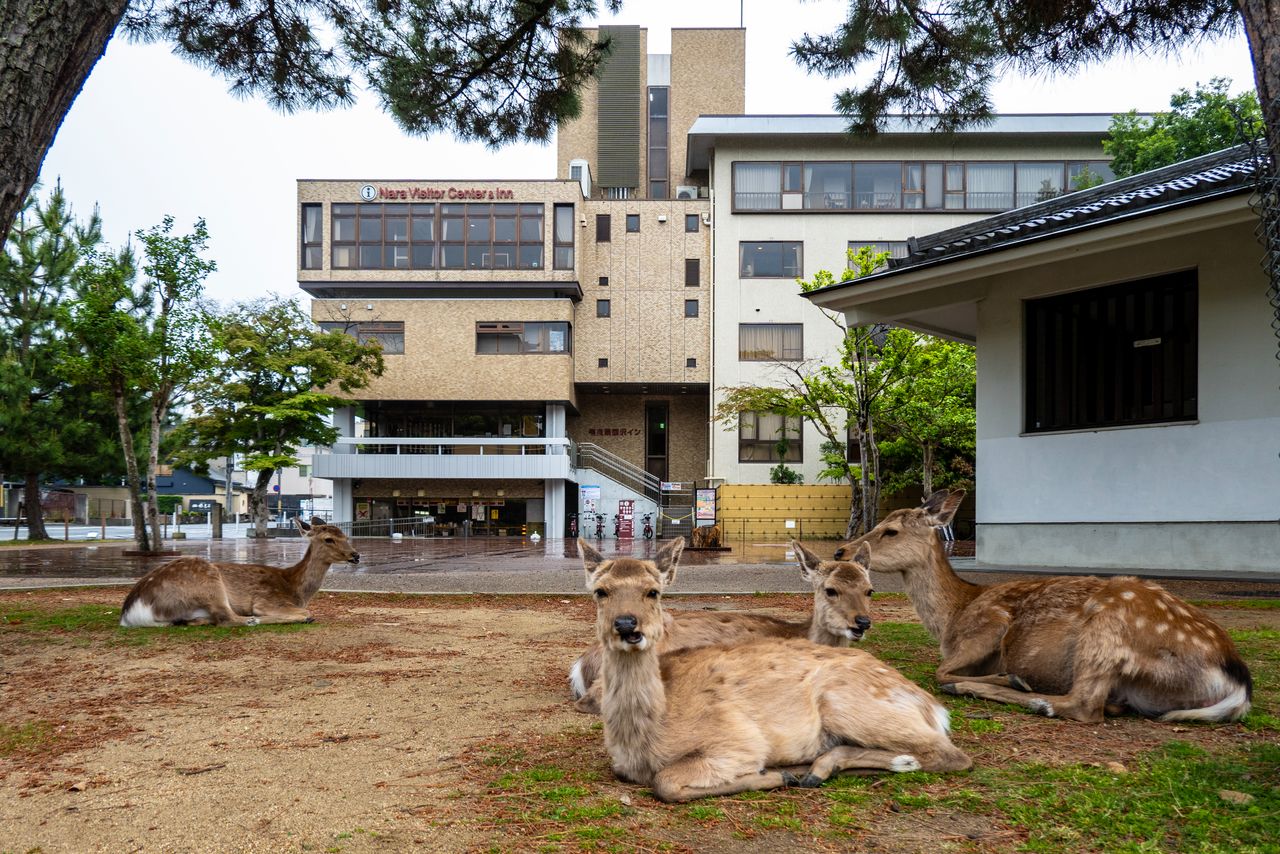
The Sarusawa Inn is located in the old part of Nara. (© Nippon.com)
The Nara Visitor Center and Inn (located in the city’s Ikenochō district) is both a tourist information center and accommodation facility, and is highly rated by tourists as a hub to explore the prefecture. Just 10 minutes’ walk from Kintetsu-Nara Station, the Center is referred to by overseas tourists as “Sarusawa Inn” on account of its location on the edge of Sarusawa Pond, which sits on the south side of the temple Kōfukuji.
Visitors are able to drop into the information center on the ground floor lobby and receive support from English- and Chinese-speaking staff. The center also offers maps and guidebooks in English, French, Chinese, Korean, and other languages, a currency exchange machine that accepts 12 different currencies, and a prayer room for Muslim visitors. Tourists love the cultural experiences offered by the Center: They can try their hand at origami while referring to English or Chinese instructions, have a go at calligraphy using a brush, and even dress up in kimono (all free and available daily). A tea ceremony experience is also available (weekly; fees apply).
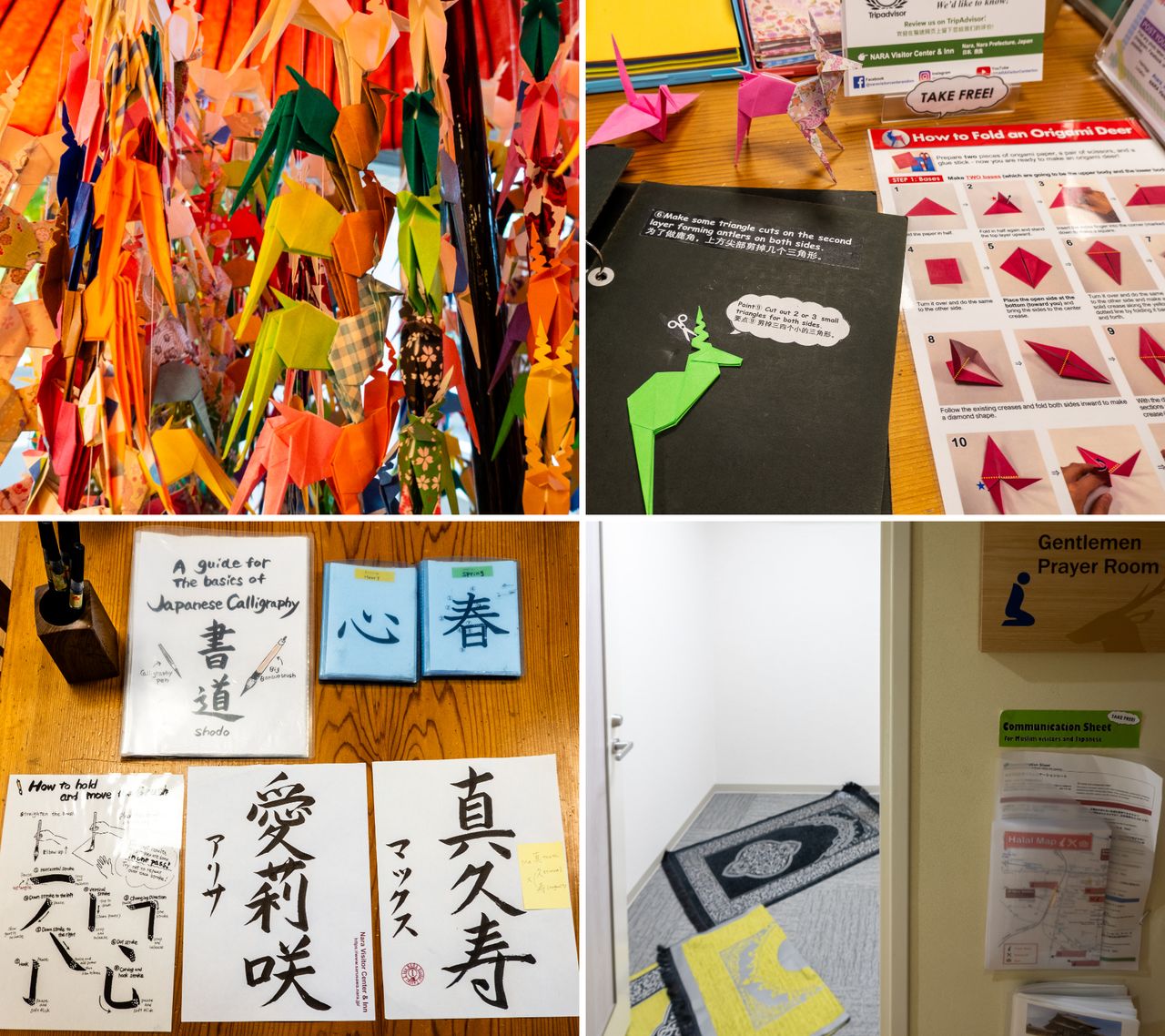
Top left: A thousand paper deer (not cranes!) greet visitors. Top right: Visitors can try their hand at origami. Bottom left: Center staff will write the names of visitors in kanji. Bottom right: The Center offers male and female prayer rooms and a foot-washing area for Muslim visitors. (© Nippon.com)
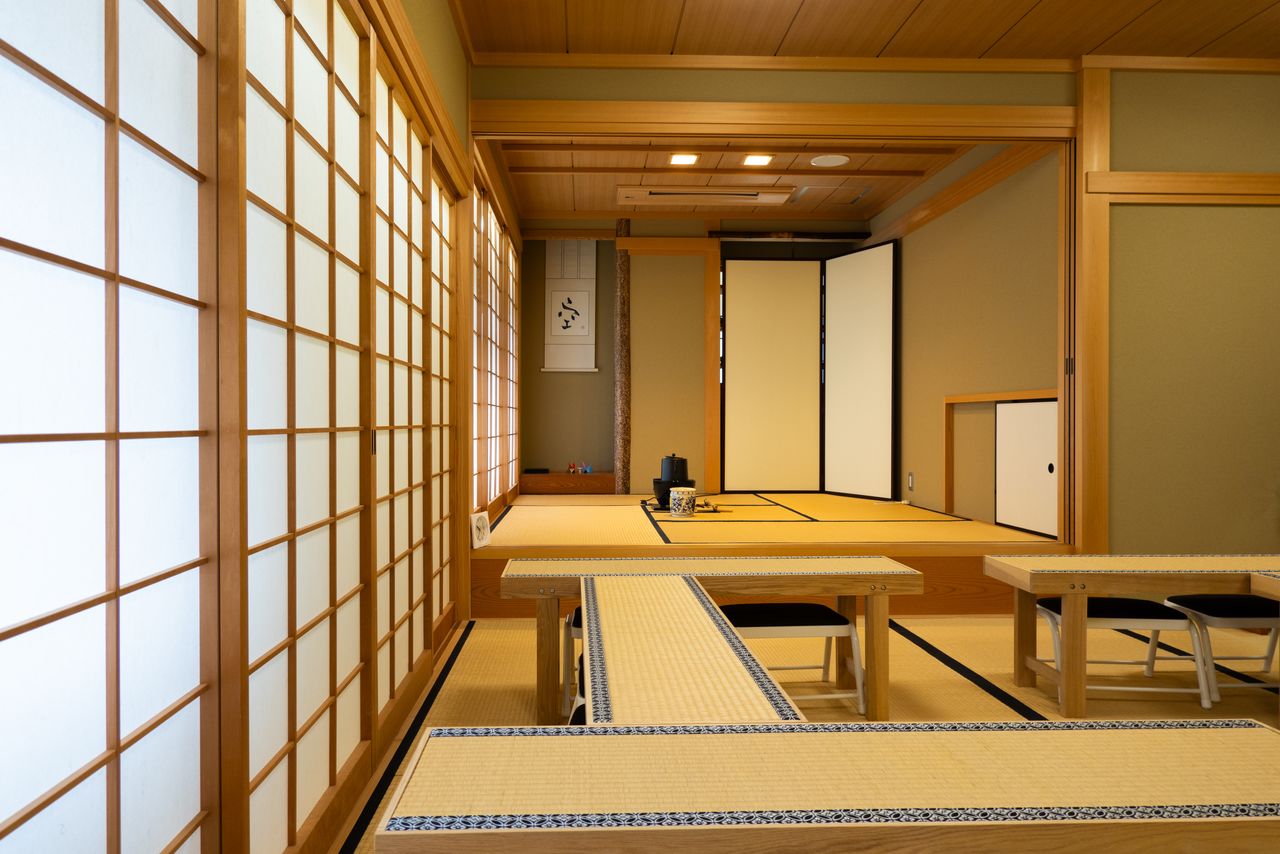
The tea ceremony room contains benches for those not used to kneeling. (© Nippon.com)
Not only is the accommodation here more reasonably priced than nearby hotels, the Sarusawa Inn also features a communal kitchen and laundromat. Suited to longer-term stays, the facility is a popular with those who have relocated to Nara and are looking for permanent digs. While meals are not provided, the Inn’s location near Chinatown means there is no shortage of meal options.
Yamanouchi Nao of the Nara Visitors Bureau that runs the Visitor Center and Inn says that the accommodation provides information on restaurants, thereby encouraging guests to spend money locally. While the lobby is full of local produce and handicrafts, these are not for sale—rather, staff tell guests where they can buy the items on display.
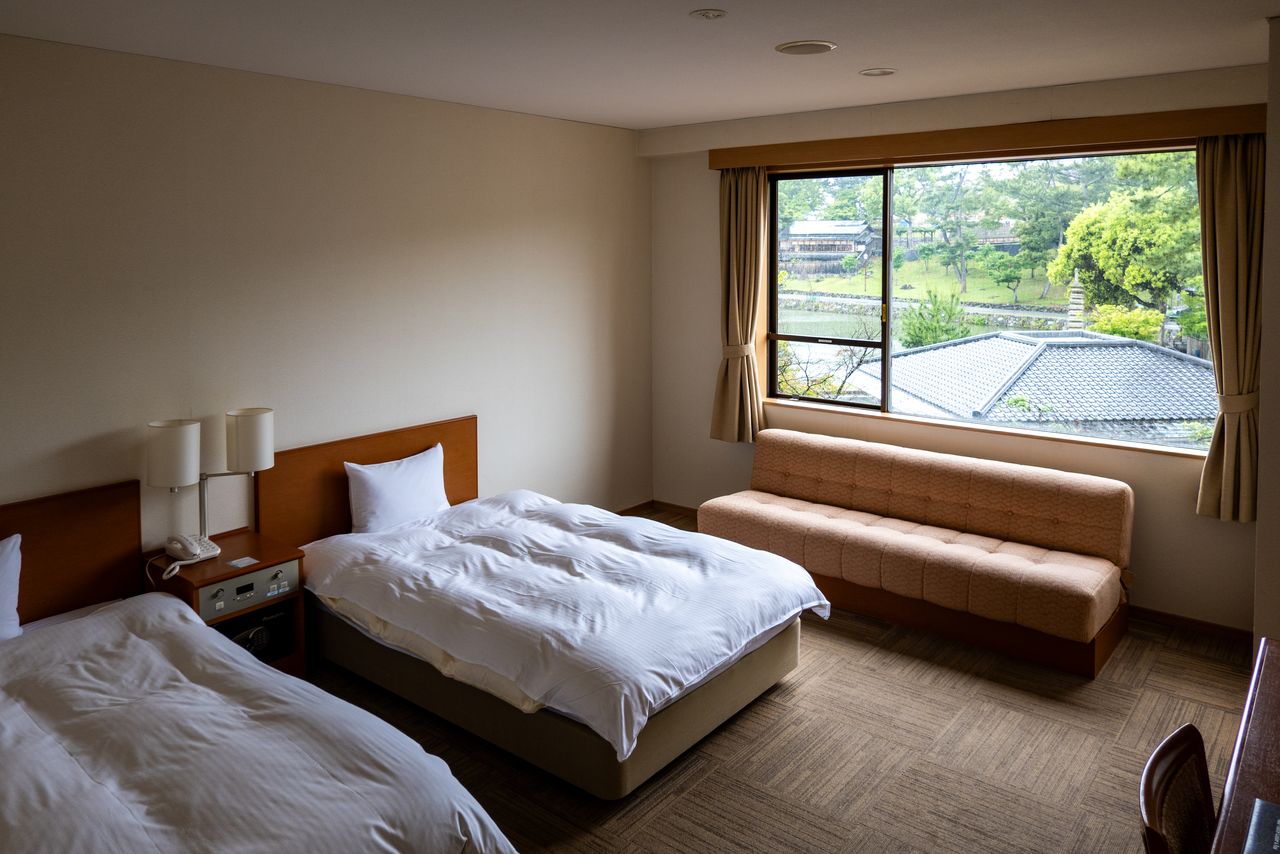
Some of the 24 guest rooms feature traditional tatami floors. A 27 square-meter twin room starts at ¥5,000 per night (as of summer 2024). (© Nippon.com)
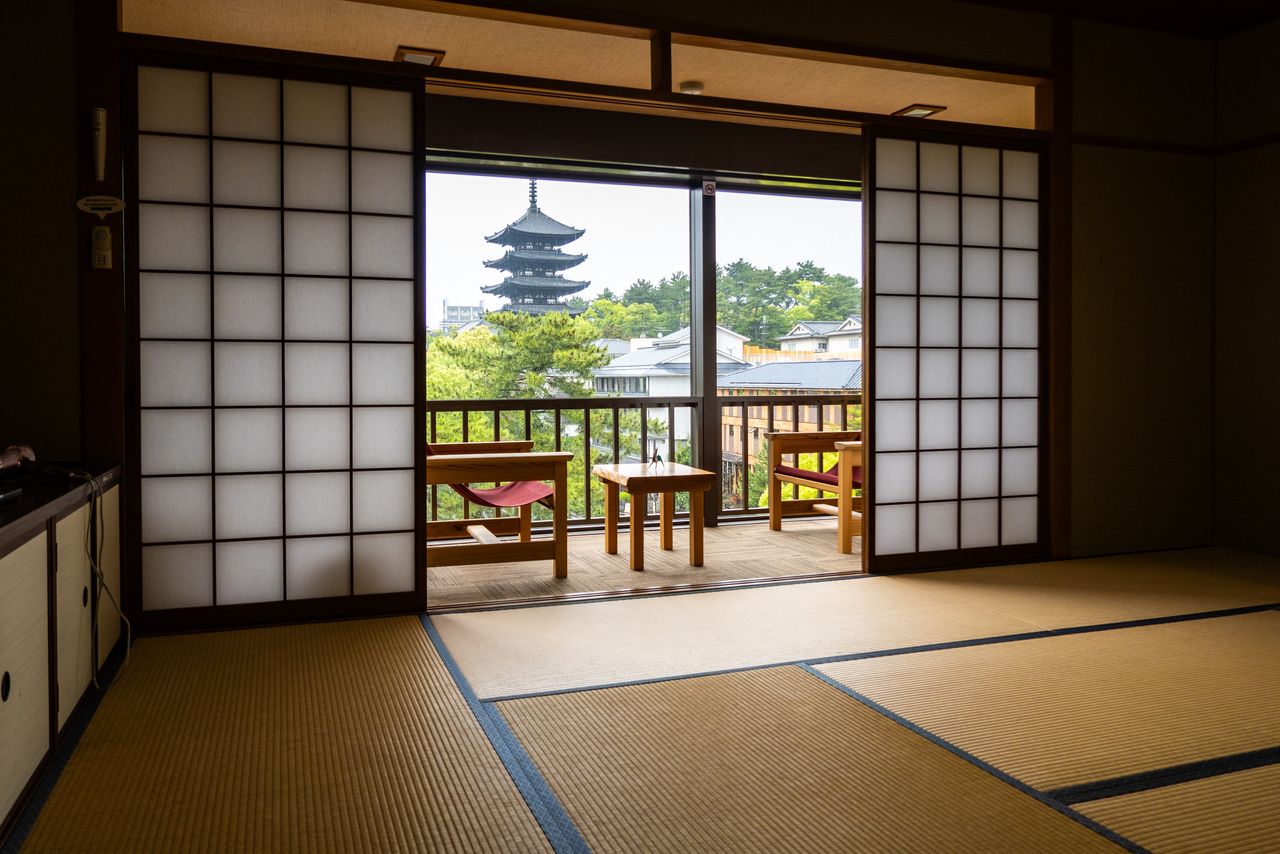
The Center’s prime location gives a view of Kōfukuji over Sarusawa Pond. (The restoration of the pagoda will be completed by 2031.) (© Nippon.com)
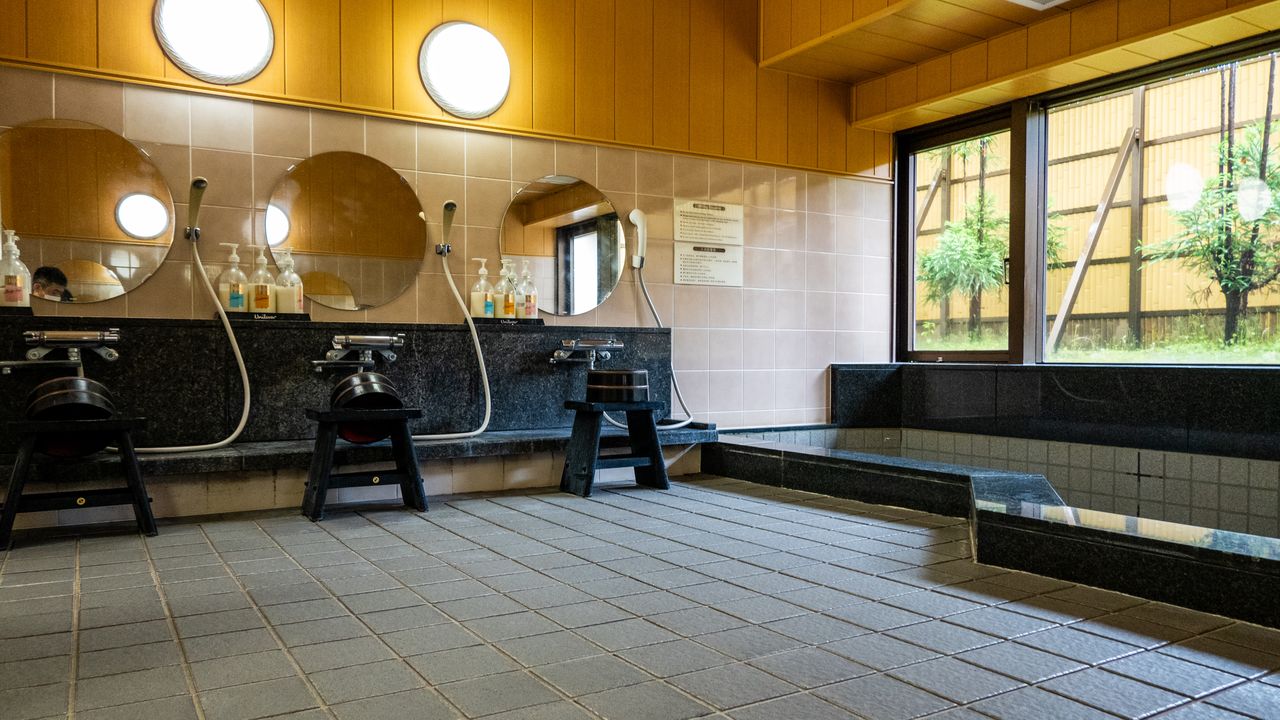
In addition to their ensuite bathroom, guests are also able to use the communal bathing area. (© Nippon.com)
Foray into Nara to Discover Rich Culture and Natural Beauty
Kubota Ikuyo, who provides services in English, says that most guests are solo travelers, and that, increasingly, guests are staying for multiple nights or long-term. The Mount Kasuga Primeval Forest and other nature spots are popular. Some travelers foray even further, to the pampas highlands of Soni or to Tenkawa, with its dynamic valley.
“Neighboring Nara Park and Naramachi are standard walking courses for first time visitors. However, the city of Nara is actually at the northern tip of the prefecture. Go south, and you will find the historic temple Hōryūji, Asuka, and Yoshino. In addition to shrines and temples, the area also boasts amazing natural beauty, and is ideal for those who want to get away from the daily grind and relax,” says Kubota, emphasizing the attractions the prefecture has to offer.
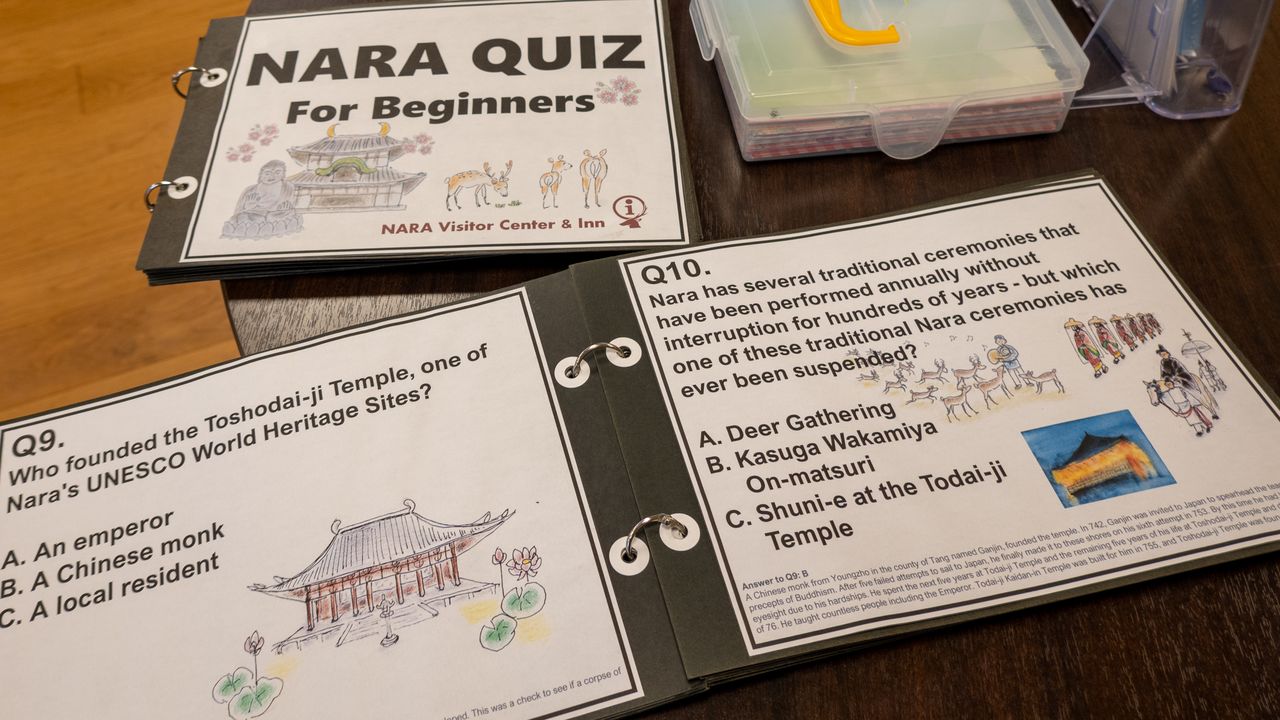
This Nara trivia quiz is designed to help visitors learn more about the area. (© Nippon.com)
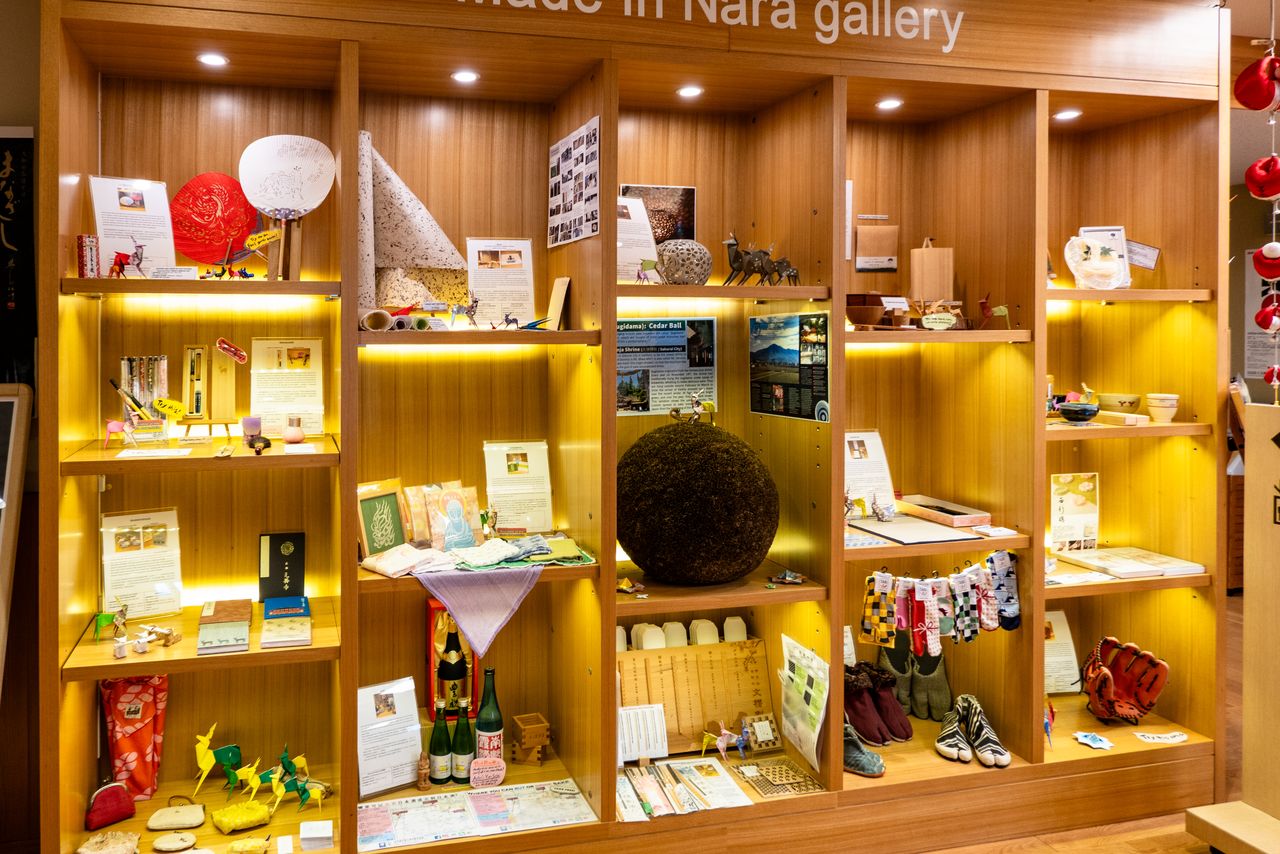
Local produce and handicrafts on display include Miwa sōmen noodles, persimmon leaf sushi, calligraphy implements, crafts made from Yoshino cedar, and, surprisingly, a baseball glove. (© Nippon.com)
The fact that Nara can be visited as part of a day trip from major centers Osaka and Kyoto actually works against it, because many tourists pass through without staying overnight. Because of this, Nara actually has the fourth lowest number of overnight visitors and hotel rooms in the country (as of 2022).
In around 2013, When the Nara prefectural government was planning the Sarusawa Inn, it identified a vicious cycle whereby the low numbers of tourists making overnight stays meant that more accommodation was not built, and the lack of good accommodation in turn caused prospective tourists to go elsewhere, causing hotel and restaurant businesses to suffer, says Yamanouchi. There was therefore an urgent need to build facilities to accommodate some of Japan’s increasingly numerous overseas visitors. This state of affairs prompted the government to open the facility earlier than initially planned—something it achieved by renovating an accommodation facility originally used by government employees, rather than building a new facility. The facility eventually opened to the public in 2015, the year in which overseas tourism to Japan really took off.
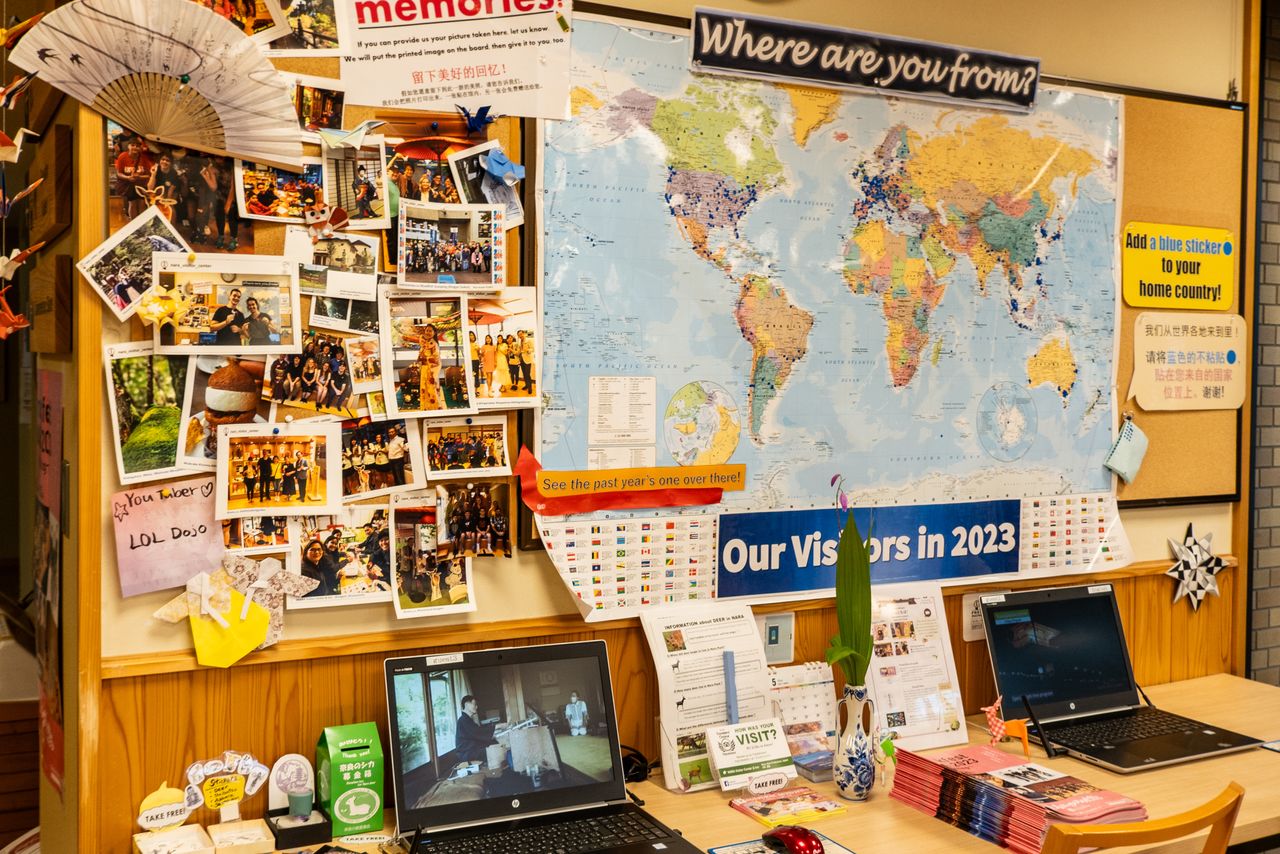
Photographs and messages from the Inn’s many visitors. (© Nippon.com)
Nara continues to be a place that many travelers ignore, a state of affairs that the prefectural government is trying to remedy by concentrating on encouraging more hotels to come to the area. The overseas-run Shisui luxury hotel opened in August 2023 on a government-owned site in Nara Park that was home to the governor’s official residence in the Taishō era (1912–26). In 2026, another upscale hotel will open on the heritage site of the former Nara Prison.
The Sarusawa Inn has seen its own popularity rise as the prefectural authorities have directed their efforts toward boosting Nara’s image as a whole. “We get a lot of visitors whose friends have told them that Nara was well worth the visit,” says Kubota with satisfaction.
Nara is a place to encounter countless examples of traditional culture in the form of not only architecture and art, but also hanami (cherry blossom viewing) at Mount Yoshino, the original and definitive hanami destination, and persimmon leaf sushi, which has been a local delicacy since the Edo era. To really experience the essence of the Japanese culture that is the attraction of this ancient capital, you need to spend plenty of time here.
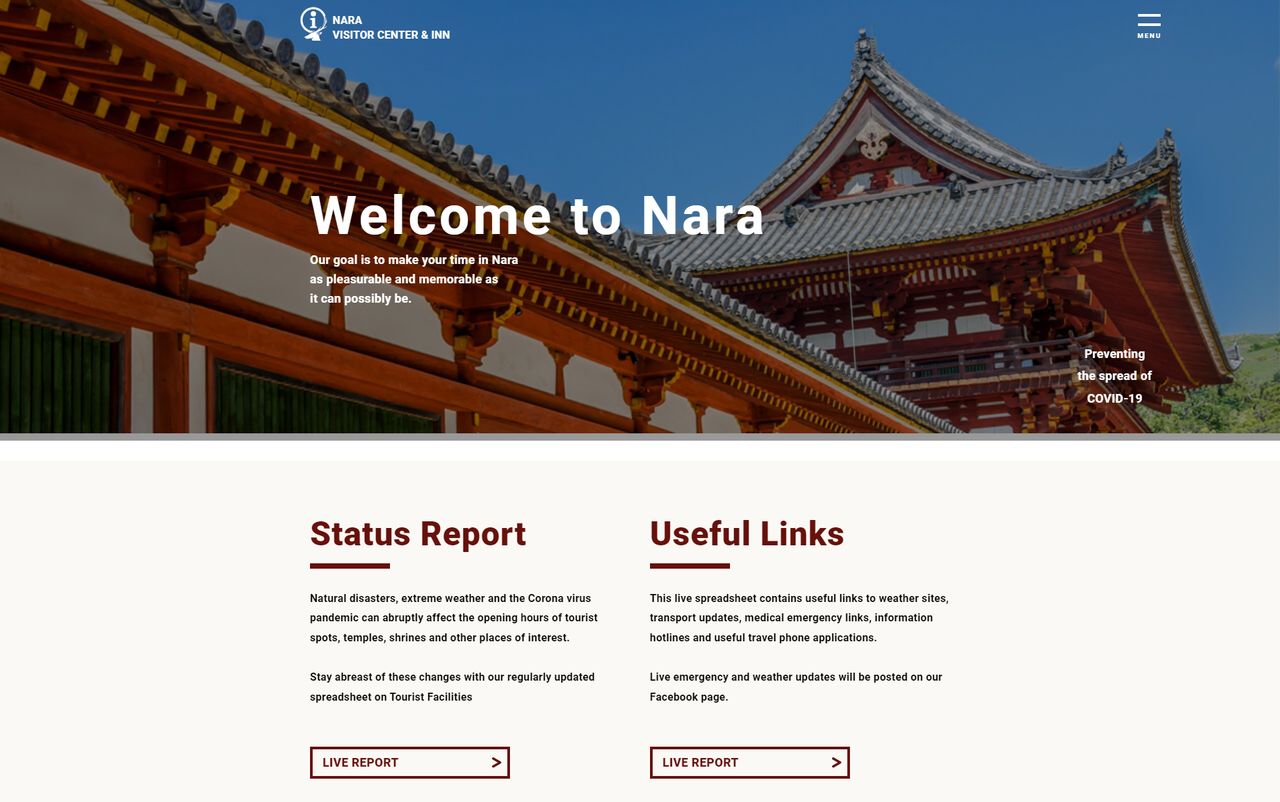
The Nara Visitor Center and Inn website shares information on local sights, cuisine, and other information useful to tourists. (© Nippon.com)
See the Nara Visitor Center and Inn website for details https://www.sarusawa.nara.jp
(Originally published in Japanese. Report, text, and photos by Nippon.com. Banner photo © Nippon.com.)
